Painting a Childhood Dream
A childhood dream came true when I finally made a painting with my favorite subject.
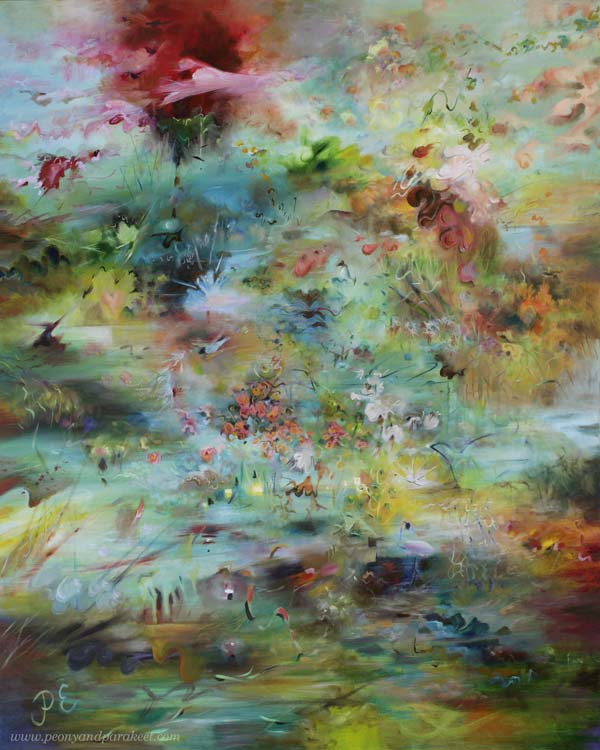
I’ve always wanted to paint mammalians, but reaching this point has taken a long time. The best must be protected before it comes out exactly as it is meant to be!
“Predators, Right?”
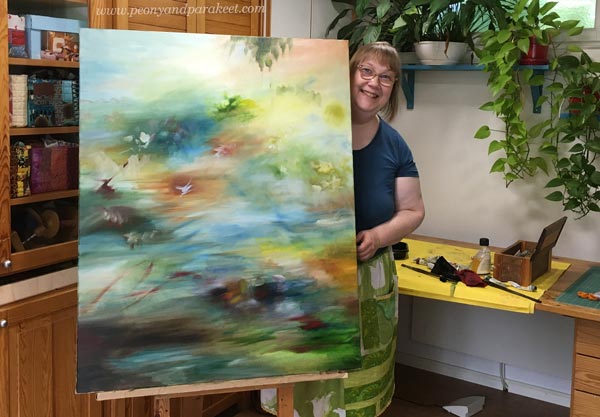
In July, I picked a brush, and said to myself: “Predators, right?”
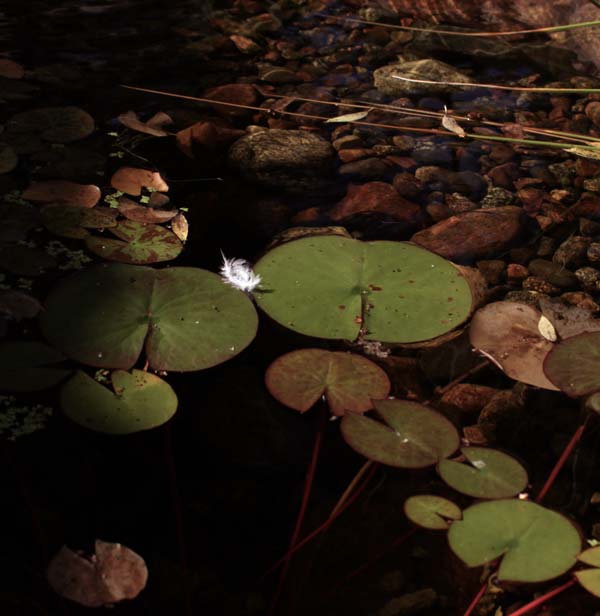
As a child, my friends talked mostly about horses, but I was a lion girl. I drew a lot of lions and antelopes: predators and prey. I had learned from nature books that the world works that way.
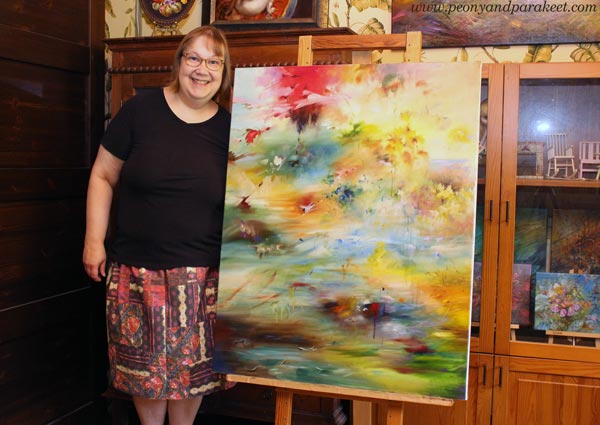
When I went to school, my parents bought a black and white television. Back then, my favorite profession was lion tamer. I wanted to be the new Joy Adamson!
“Paint What You Want!”
It is easy for a child to draw what she wants, but an adult is more critical.
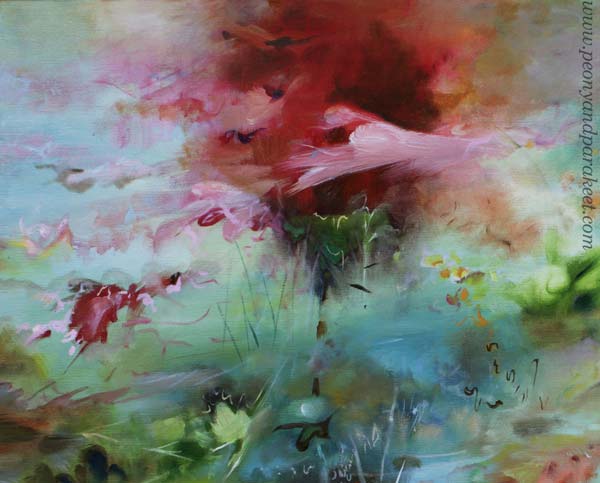
After seeing life and understanding all its complexity, prey and predator are no longer separate, but part of a whole.
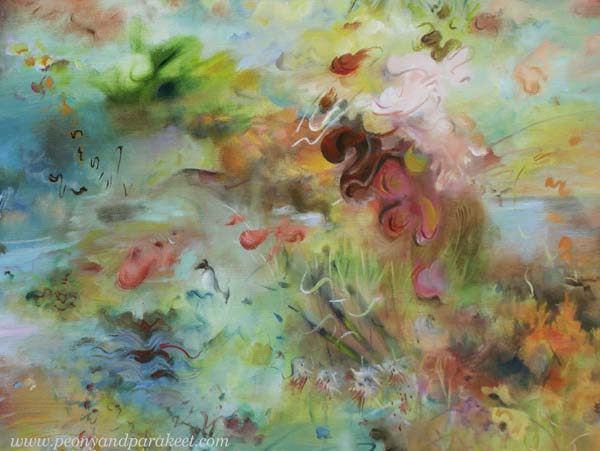
And to get hold of the whole, we have to get in touch with our inner self and grow our skills.
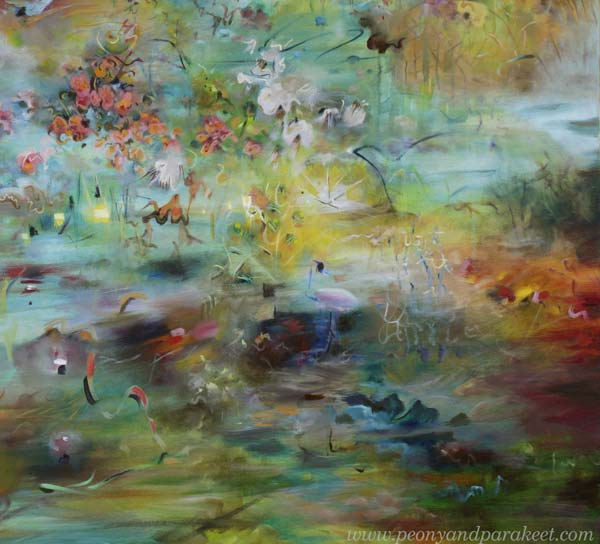
Art is like a meadow that grows seed by seed.
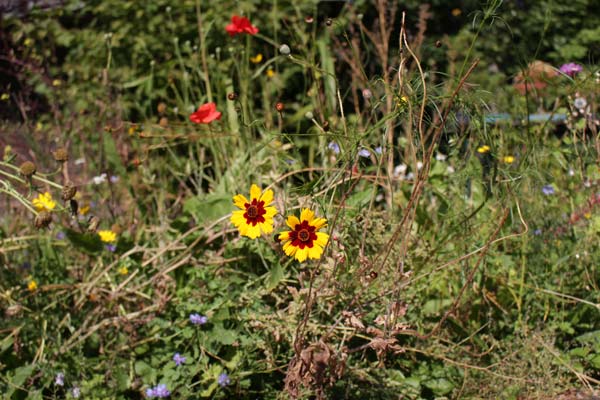
Love and sunshine are needed!
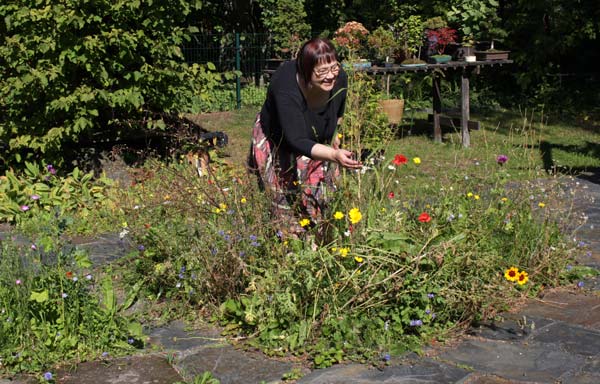
I try to speak softly to myself when I paint. Like it would be a child who paints, not an adult. I hope this friendliness also comes through in my classes!
Your Childhood Dream?
Painting big and detailed takes not only friendly self-talk but also patience. That’s why I like to practice with smaller drawings.
Big or small – we are on this journey together!
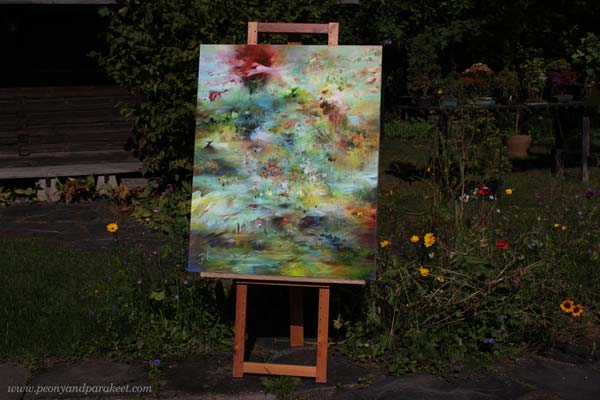
What was your childhood dream? What subjects did you draw as a child?
Four Art Mediums – Four Projects in Progress
Many Mediums – Many Versions of Style
I am not overly excited about the word “focus.” I have one artistic vision, but I don’t limit art mediums much. I think my style is evident in whatever I do. This year I have allowed myself to stretch even further than before, and embrace the challenges that different art mediums bring to me.
Cross Stitching – A Cat in Progress
Do you remember this cat from the course Magical Inkdom? In April, I asked what drawing should be my next cross-stitch design, and you voted for the cat.
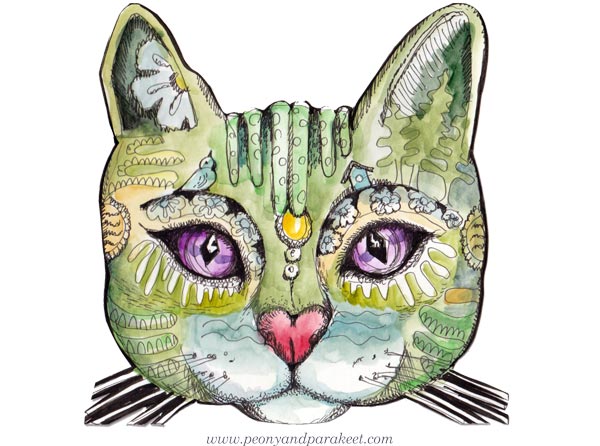
I have now made a design based on the drawing. To make sure that there are no errors in the chart, I have been stitching it myself first, going through every detail. The stitched piece is nearly finished as you can see in the picture!
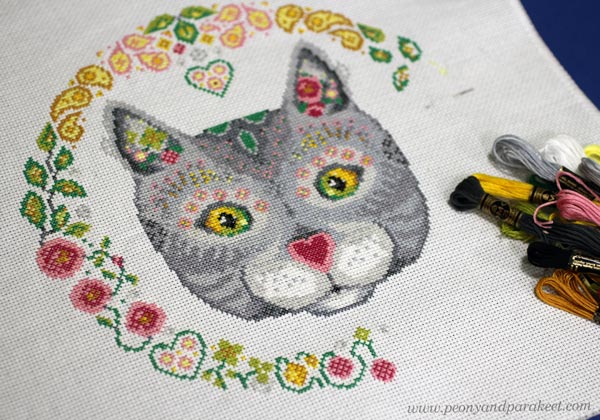
While stitching, I came up with the idea of including different colored versions of the cat to the final instructions. Maybe a black cat at least. What do you think?
I hope to get the chart for sale before December. This is a project I have been working on in the evenings.
Oil Painting – A Big Painting in Progress
My main medium – oils – were on a break for a few months so it was really nice to get a new painting started in July.

I work slowly from one layer to another, letting the painting dry between the sessions. Here’s where I am now.

In the photo above, I am wearing a patchwork skirt sewed from the fabrics that I designed many years ago. The motifs are based on my drawings and knits.
I have still quite a lot of work to do with the painting. I hope to get it finished in October.
Digital Art – A Virtual Artwork in Progress
Transferring my painting style to digital three-dimensional modelshas been a year-long project. Watch this video to see what I made last spring for the project. The project is now coming to an end in September. I still have some things to adjust and add, but most of the things have been done.
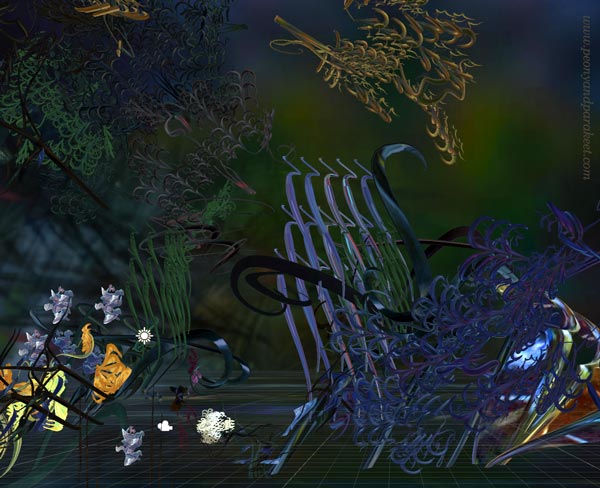
Sadly, the photos are nowhere near the overall experience that can be watched with VR glasses.
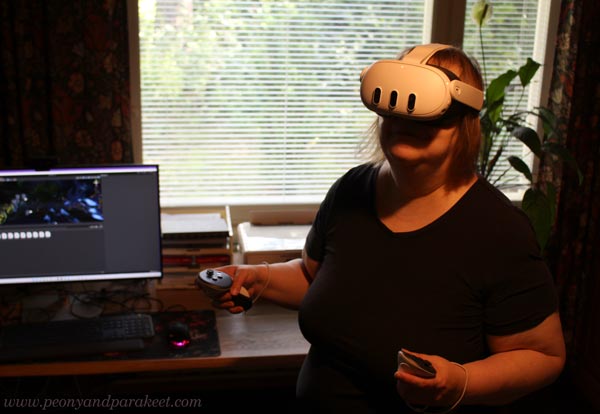
There’s a lot of movement. but also interaction: a user can move around, open a flower, create new objects etc.
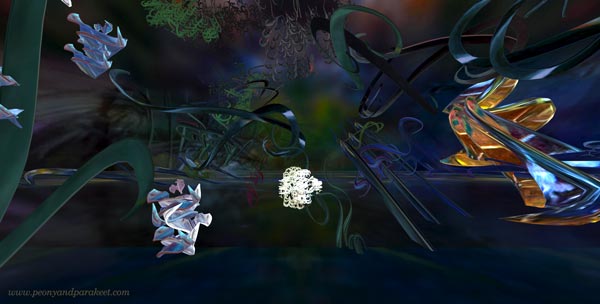
Still images are not the same as seeing everything in moving 3D, but at least you get a glimpse of the atmosphere. I will make a separate video in September where I will share more of this project.
Watercolor Pencils – A New Course in Progress!

I am super-excited to announce that a new course will begin in September 16, and the registration will open next week! The course is called Joyful Coloring, and it’s about using watercolor pencils for colorful happy art.

More about the course next week. I hope you will join!
About Birds and Art
This week is about observing birds and bringing them into our art.
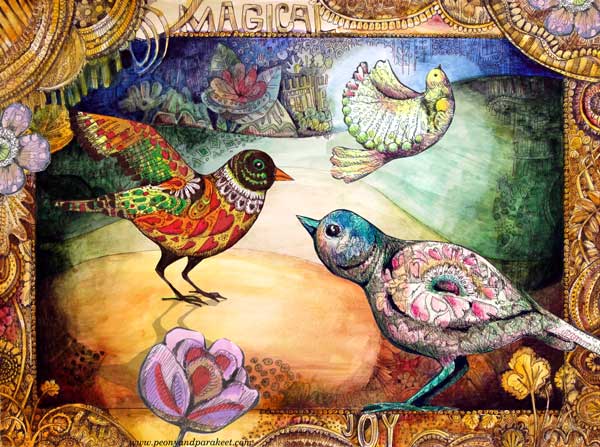
These are from my online classes Animal Inkdom and Magical Inkdom.
Let’s start with a lonely budgie.
Last fall, the same sight always awaited me in the mornings – a lonely budgie in a big cage. The door was open, and I turned on the full-spectrum bird lamp, but nothing cheered her up. Ever since Primavera’s husband Leonardo had died unexpectedly, her world had been empty, and even the best YouTube budgies couldn’t fill it.
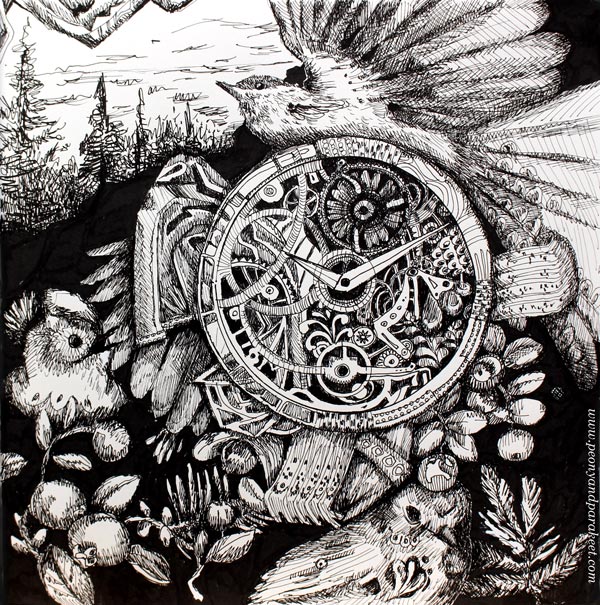
I have had budgies since 1991. My first budgie, Piuku, was also alone at first. Unlike 5-year-old Primavera, Piuku was a young bird. She adapted to being alone by taking me as her best friend. Later on, Piuku got other birds as companions.
Birds Bring Joy

The most enviable quality of birds is their ability to fly, but the more you get to know birds, the more you realize that their social life is very lively. A small flock of a few budgies can be like a soap opera. There will be arguments, gusts of affection, gossip, singing sessions, and all kinds of fun play. This way, the day flies by!
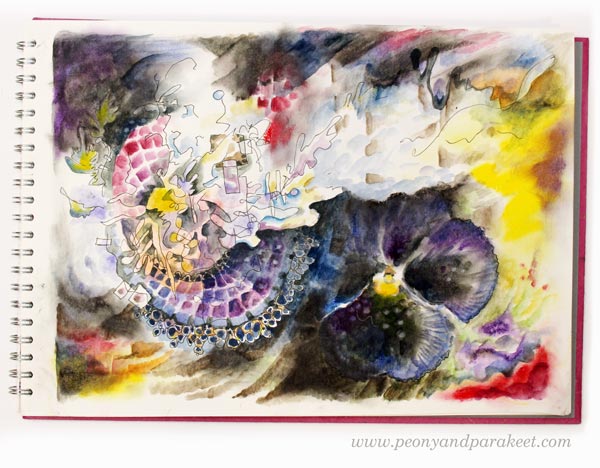
I have admired birds since swallows made their nest in the eaves of my childhood home. There were many other birds in the big yard too. I had bird books, and I dreamed about seeing kingfishers and other exotic birds.
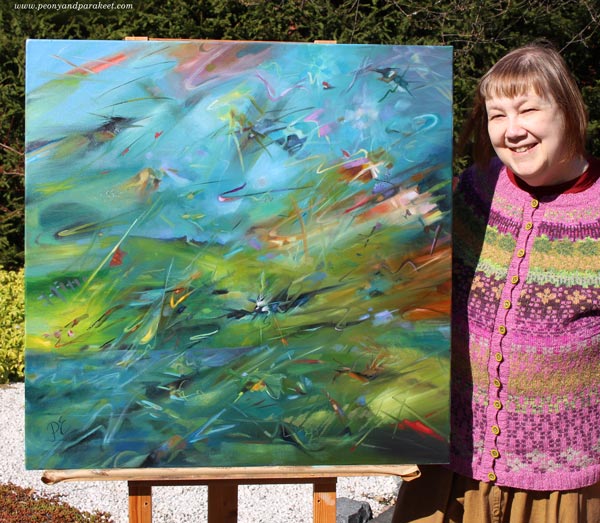
Similarly, as wild birds make you look up, pet birds bring lightness to the home. Their vocals are clear and the flight sounds lighten the atmosphere. It is as if the world is not only lying down but also up in the air.
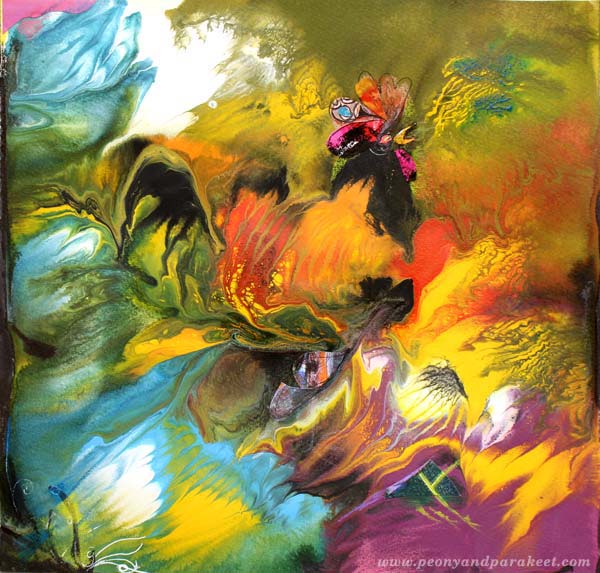
Birds and Flowers
At the beginning of my entrepreneurial career in 2008, I founded an Etsy shop to sell crafts and named it Kukkilintu.

Kukkilintu is a Karelian embroidered bird pattern that symbolizes happiness.
Karelia is a place in Eastern Finland, a part of it was lost in the war with Russia in 1940. I live in Southern Finland but was born in Northern Karelia.
Karelian people believed that the soul leaves the body in the form of a bird. Kukkilintu is a bit like the Finnish version of the peacock, which appears in the designs of other countries with the same meaning.
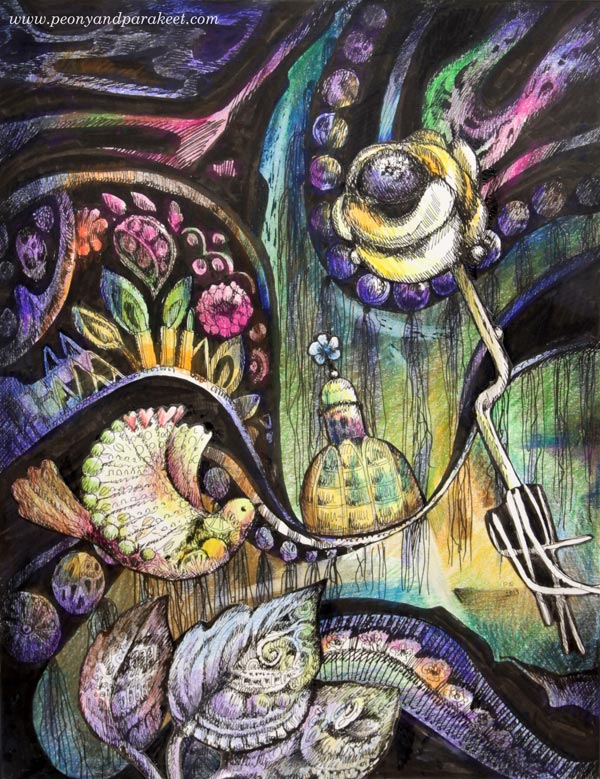
I thought the name “kukkilintu” was funny because it had the words “kukka” and “lintu” – “flower” and “bird.” When I was thinking about a name for my art blog a couple of years later in 2010, I thought that the flower could be a peony and the bird a budgie, so, a parakeet.

These two themes “flower” and “bird” have guided my creative process. I have wanted to learn the language of flowers and create beauty in the world, but also understand the life of birds and include their movement. Birds, flowers, and art belong together.
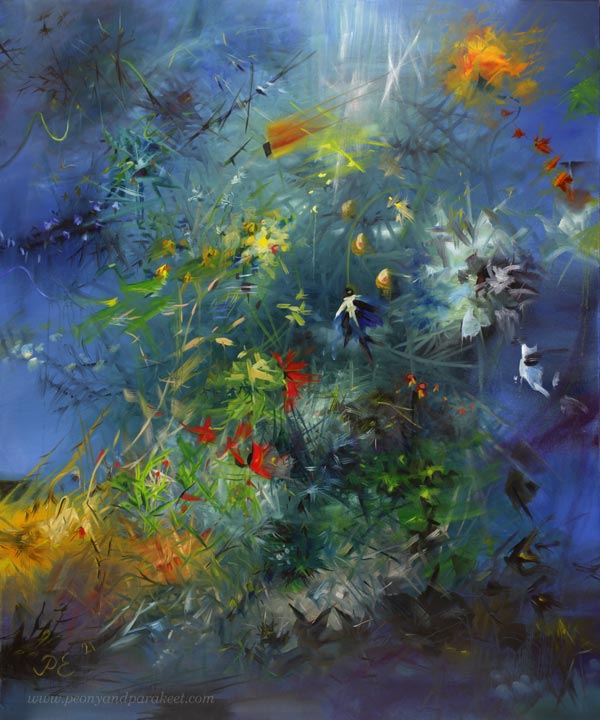
However, recently in my everyday life, it happened that the more I delved into the flowers, the more time they took away from the birds. I didn’t want to keep pet birds anymore, but felt that watching wild birds would be enough.
Magical Scene
Outdoors, one scene is above the rest – when a bird flies across the scenery. The bird then becomes kukkilintu – a flower bird. It takes over the landscape and erases all the sadness.

I came up with this when I was grieving the death of one of my dogs. Since then this very ordinary event has made me happy. It’s a message from the world that we always have inside of us, but that we don’t always remember, especially when we’re like a lonely budgie that has a hard time seeing ahead in life.
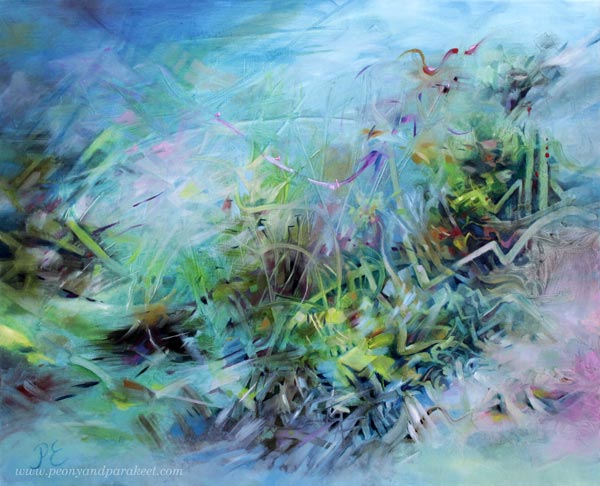
We must believe in our abilities, and happy endings as well. I found a new home for Primavera, where it has a spouse who was also widowed. I wish Primavera a long life. After all, it already has a long-lived name-sake, the famous painting by Botticelli born in the 15th century, which I have been to Florence to admire.
Do birds appear in your art?
How to Paint a Fantasy Horse Figurine
This week, we apply art to something different than usual. We use our skills to transform a Schleich horse or other plastic figurine into a fantasy animal.
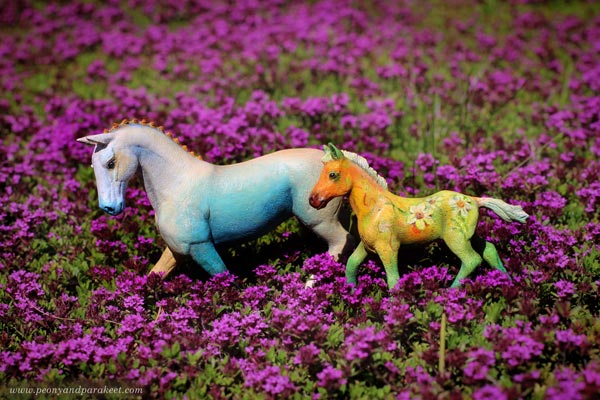
I have a soft spot for plastic horse collectors, and I follow many of them on Instagram. One of the most inspiring accounts is Lightning Leoo (@lightningleoo). Leo has organized community challenges on Instagram and Discord. I have participated in them a couple of times. Like Leo, most of those who customize collectible miniatures aim to make the animal look more realistic. However, I want to be more playful with colors and ideas.
Step 1 – Choose a Theme and Paint the First Layer
Start by choosing a theme that gives ideas for the coloring. The animal figurine here is a brown Schleich foal and my theme is daffodil. I used acrylic paints to make the legs green, the body yellow, the hoof orange-red, and the tail and the main white – just like the flower!
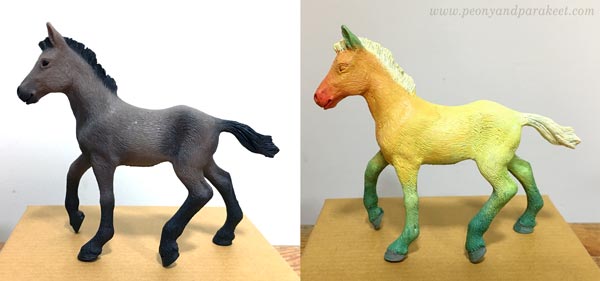
At this point, the animal doesn’t look nice at all, but that’s ok. The idea is just to cover the original paint and make a simple foundation for the decoration.
Step 2 – Add More Tones and Decorations
After covering the original color with the theme colors, mix more tones of those colors. For example, if you have used one green in the previous step, now mix more green tones – cooler and warmer, darker and lighter, brighter and more muted. Add slight variations of tones on the top of the first color layer so that what used to be one solid color has now a gradient of tones. This makes the color more natural. Note: you can use this technique in any art!
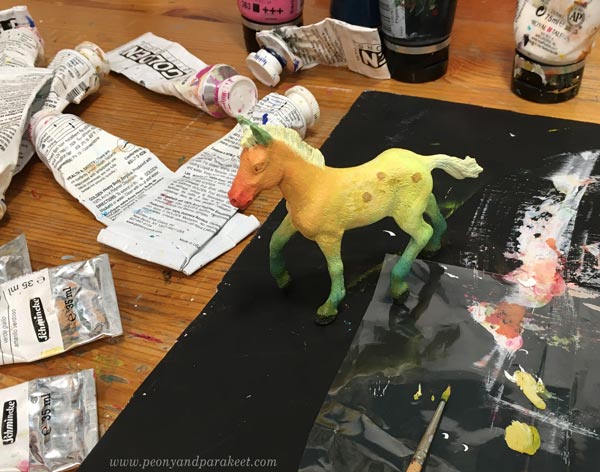
In this project, I created color mixes of all kinds of greens, oranges, yellows, and whites.
At this point, you can also start decorating the figurine and use these color mixes in decorations, eyes,You and other details.
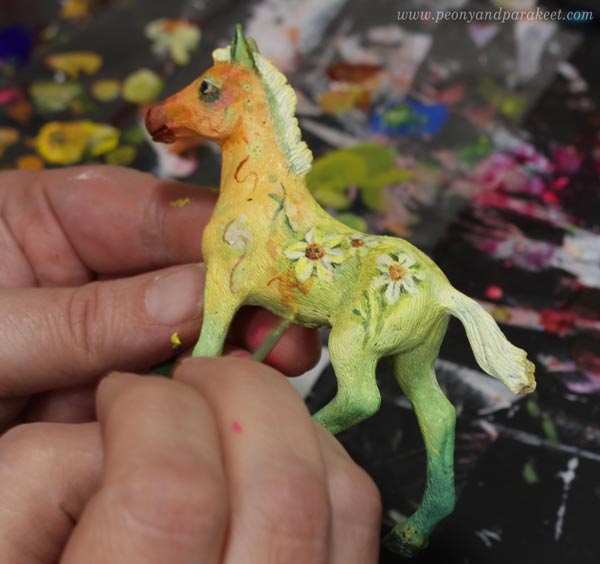
Get ideas for decorations from the theme! I painted small daffodils.
Step 3 – Optional – Add Shadows with Soft Pastels
Soft pastels make the figurine look more real and highlight the best parts. First, scrape them with a sharp blade to get color powder. Use a small brush to spread it where the shadows are, for example, where the leg meets the belly. You can also soften the color changes with pastels.
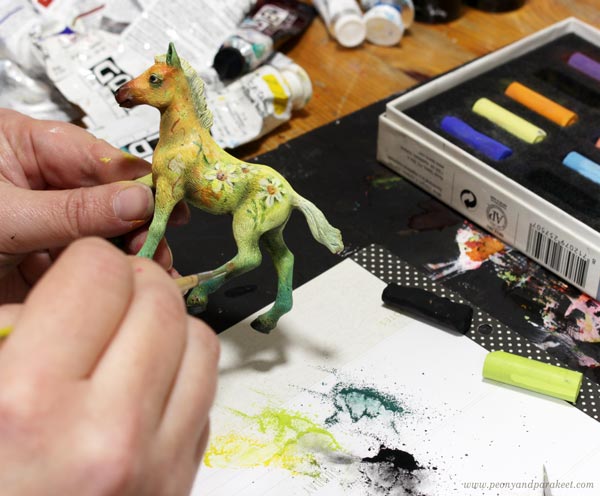
Attach the powder more permanently by spraying the fixative over it. Notice that after attaching the powder, you can continue with the finishing touches in acrylics!
Step 4 – Take a Fantastic Photo!
We always should take a good photo of the finished work, but with a fantasy horse, it is very rewarding. Find a place where you can fool the eye about the scale and bend down to take a photo a bit upwards.
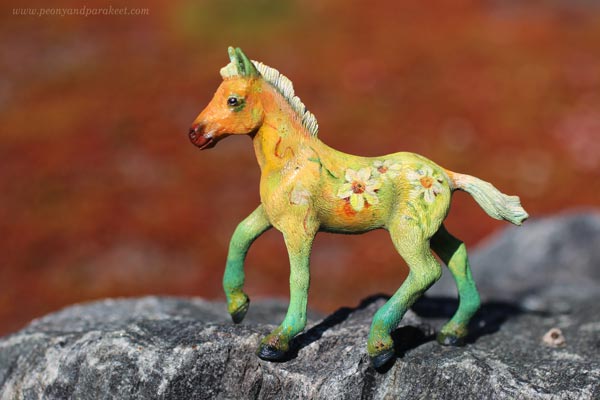
Another option is to make a gallery set up so that the background is white and the figurine is photographed like a piece of art.
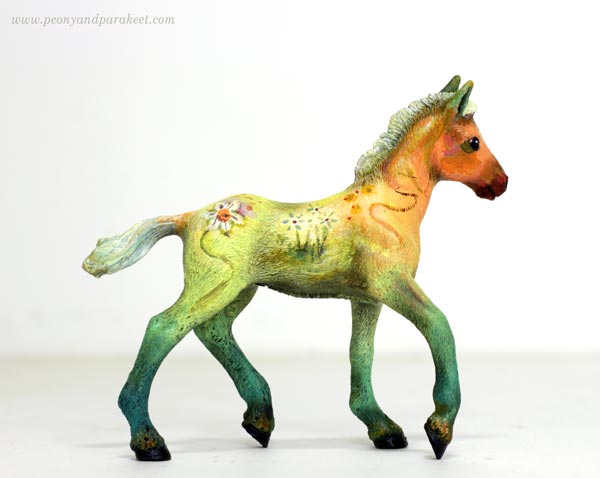
Another Example of a Fantasy Horse Repaint
Here’s a Schleich horse that is bigger than the Daffodil fowl. My theme for this one was peach. The decorations are simple, but there are many tones and lovely gradients.
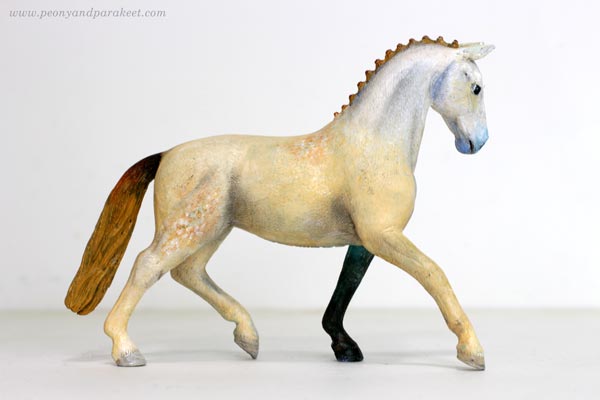
Making one foot in a different color adds drama and a bigger horse is easier to paint.
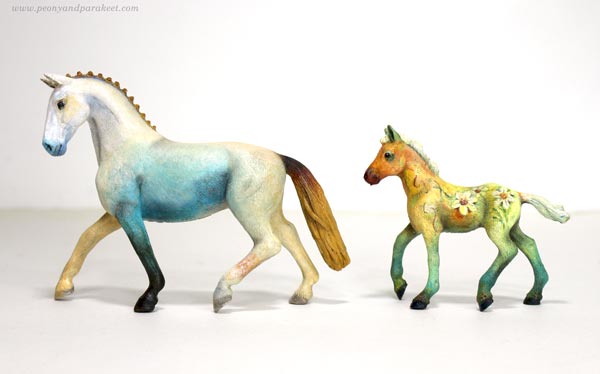
It was fun to photograph these two together!
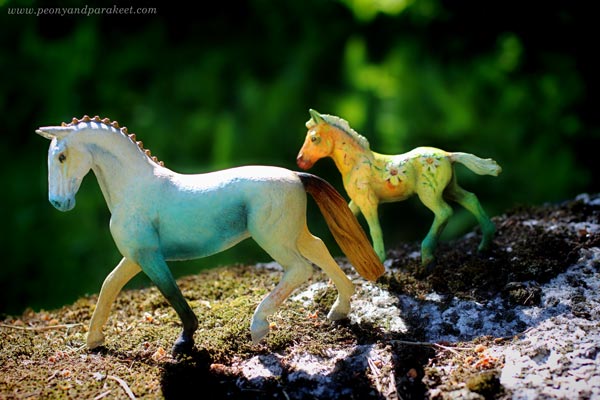
Natural light creates its own effects and makes the fantasy look real.
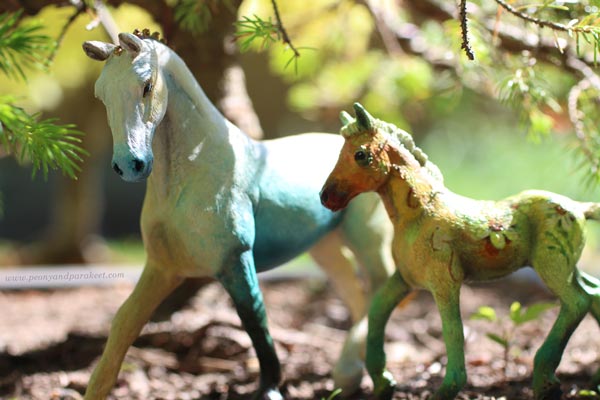
Horizontal lines in the background make the movement look more real.
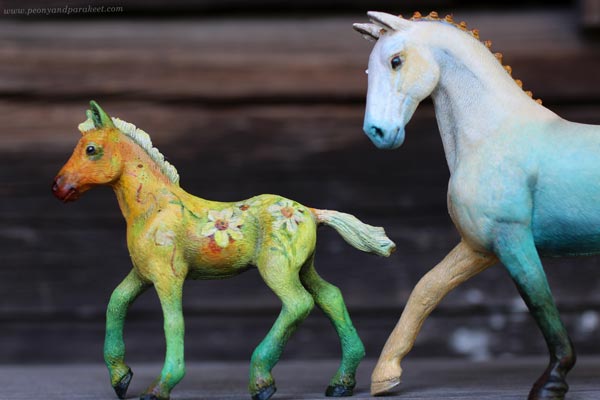
Gift Box for Fantasy Horse
These small fantasy horses are great for presents. I gave the fowl to my friend who owns not just a collection of plastic figurines but a real horse too. I found a sturdy box that I had got when ordering paint tubes.
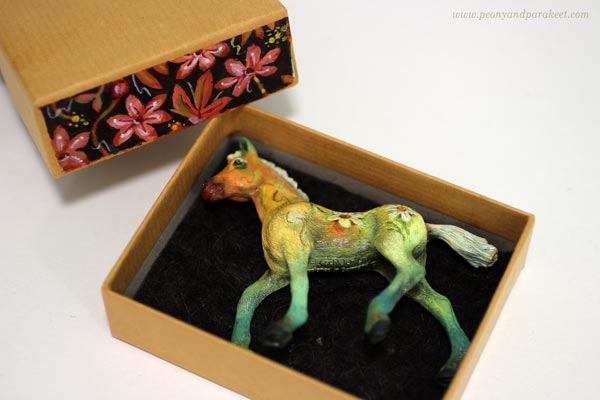
One side had writing on it, but I painted a floral decoration over it.
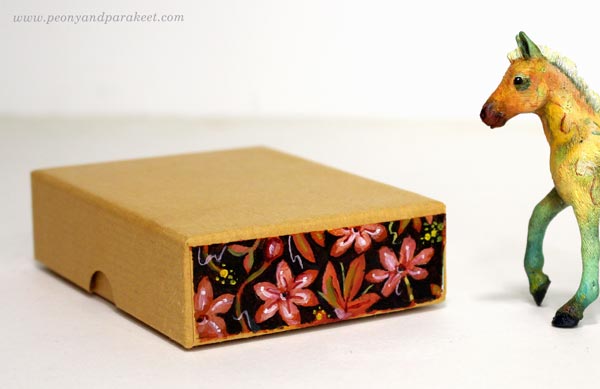
Creative Play as an Art Form
Playing has always been important to me. When I play, I get ideas that go beyond the ordinary and that combine different fields. In 2020, I even made a painting about the power of play called Steppe Wind.
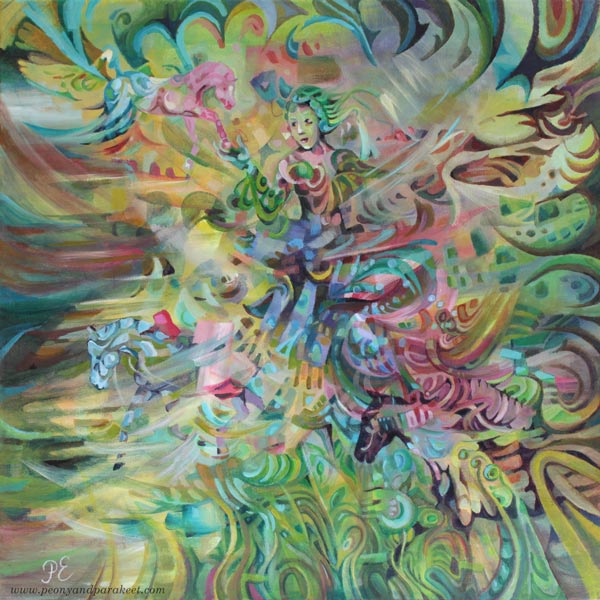
In the course Magical Inkdom, we draw and decorate paper horses and other animals.
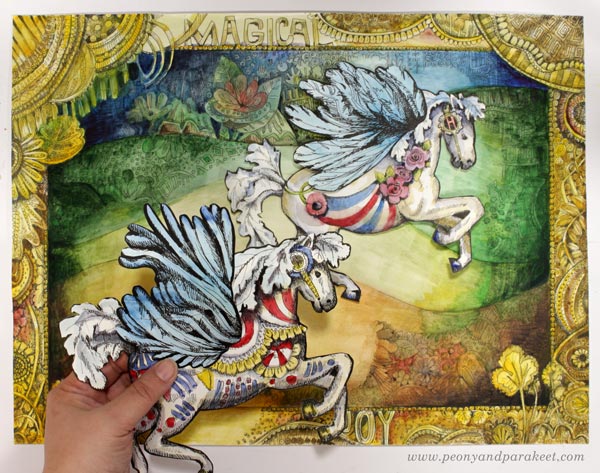
By playing we can enjoy the beauty and be comforted. It’s like we enter the same big hall of art but from a different door. Then when it’s time to get more serious, we have new energy and new power to overcome our fears.
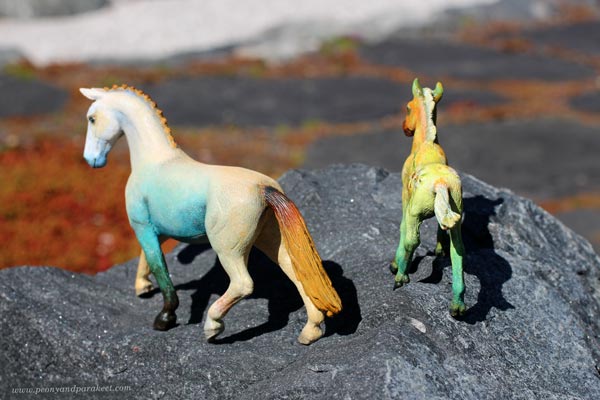
That’s why I want to bring up topics like painting and photographing figurines in this blog.
What do you think?